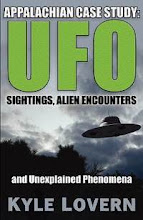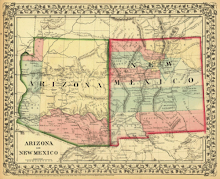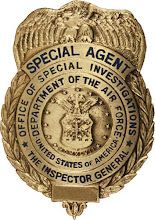What if the so-called "Phoenix lights" UFO incident in 1997 had happened during daylight hours? In September 2018, are we better prepared for public, daylight, high-profile UFO encounters?
Do average adults, teens and kids have adequate mental and emotional preparedness for these kinds of situations?
To explore these important questions, it may be instructive to look at the Phoenix lights case from March 13, 1997. Many people were reportedly looking skyward on that warm spring evening to catch a glimpse of the famous Hale-Bopp comet.
When the Phoenix incident took place, it was early evening and already dark. This undoubtedly minimized the number of residents who actually visually observed what was reported to be a huge V-shaped object with large lights underneath.
If this had occurred during daylight, would there have been more anxiety by the public? Would local public safety peace officers, firefighters, paramedics and EMTs have been faced with increased challenges to maintain public safety?
PSYCHOLOGICAL PREPAREDNESS
In many alleged UFO cases, an object quickly zips by at high speed and is gone in the blink of an eye. In other cases, sightings or encounters reportedly occur in isolated regions, where there are few human witnesses.
Since the object over Phoenix in 1997 was said to be very large, slow-moving and maintained a fairly low altitude, it would have been very visible over a significant length of time by tens of thousands of people if seen during daylight.
Feelings of anxiety would be very normal on the part of people who were seeing something they had never seen before. Their first impressions might be that there were two main explanations for such a large unidentified object: a U.S. craft or a ship piloted by non-humans, or at least non-Earth humans.
Once that thought process considered both options and concluded that the latter explanation was more likely, more natural questions might come to mind.
The relatively few Phoenix residents who experienced these feelings and thoughts in 1997 would be multiplied by millions.
Feelings of fear or panic can be contagious, spreading rapidly to create a human social climate. This would be a concern for public safety and public health officials, and for the general public if a significant daylight UFO event were to occur over a major city.
It can be argued that concerns of this kind may be part of the reasons for the alleged secrecy of the U.S. government's handling of the UFO situation.
THEN AND NOW
In the late 1940s, the U.S. had just emerged from the trauma of World War II. As the '50s began, the Cold War with the Soviet Union commenced. Fear of attacks on U.S. soil was part of both WWII and the Cold War.
By the early ‘50s sightings of UFOs were becoming more frequent and some Americans were naturally somewhat unsophisticated about what these might mean.
If accounts of federal government inside activities during those decades are correct, there was anxiety in Washington, D.C., about a possible invasion or infiltration of new kinds of adversaries – intelligent non-human ones.
The reasonable conclusions that these visitors were probably much more advanced technologically, and possibly in other ways, than humans also would have caused government leaders to worry.
As a result, it would be logical for them react with high levels of security, secrecy and discretion regarding public reaction to such a scenario. It could be that programs to prepare and acclimate the public on these topics were implemented.
Today, Americans and people around the world appear to be more sophisticated about the possibilities or probabilities that UFOs and other anomalous phenomena may be real, and may be something quite complex, sensitive and unusual.
Movies, TV shows, books and other media platforms have tackled the themes of surprising situations such as UFOs and extraterrestrial visitation to our planet. Sometimes the visitors are friendly, sometimes hostile and sometimes fairly neutral.
Maybe this is also the case in real life.
For most of us, the situation is unclear and we can only evaluate the available information and use our own intelligence, common sense and gut feelings to try to get an understanding of what might be going on.
Considering all the possibilities and outcomes from something like a daylight version of the Phoenix lights incident might help our communities and society prepare for that kind of contingency.
(Related articles “Storytelling affects human biology, beliefs, behavior” and “Reagan’s 1987 UN speech on ‘alien threat’ resonates now” are posted on the CultureReady blog, Defense Language and National Security Education Office, Office of the Undersecretary of Defense for Personnel and Readiness, U.S. Department of Defense.)

























































































































































































